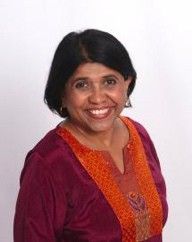ChBE Fall Seminar: From Particulate Processes to In-vitro Fertilization: Theory to Clinical Practice
The Department of Chemical and Biological Engineering at Illinois Institute of Technology will host Urmila Diwekar for a lecture titled “From Particulate Processes to In-vitro Fertilization: Theory to Clinical Practice” on Wednesday, September 28, from 3:15–4:30 p.m. in Room 108 of Perlstein Hall.
Abstract
In-vitro fertilization (IVF) is the most common technique in assisted reproductive technology and most cases, the last resort for infertility treatment. It has four primary stages: superovulation, egg retrieval, fertilization, and embryo transfer. Superovulation is a drug-induced method to enable multiple ovulation per menstrual cycle. The success of IVF depends on successful superovulation, defined by the number and uniformly high quality of eggs retrieved in a cycle. Currently, this step is executed using almost daily monitoring of the follicular development using ultrasound and blood tests. The daily dosage of hormones is customized for each patient based on these tests. Although there are general guidelines for the dosage, the dose is not optimized for each patient, and overstimulation complications can occur. The cost of testing and drugs makes this stage very expensive. To overcome the shortcoming of this system, we have developed a mathematical procedure that can provide a customized model of this stage regarding the distribution of eggs (oocytes) obtained per cycle involving the chemical interactions of the drugs used and the conditions imposed on the patient during the process that would provide a basis for predicting the possible outcome. This model is derived using an analogy between particulate processes like crystallization and IVF. Personalized optimal drug treatment procedures are developed for each patient using optimal control methods. The validation of the procedure is carried out using data from patients who have previously undergone IVF cycles. We used the first two-day data for each patient to obtain the parameters of the model for that patient. The model is used then to predict follicular distribution for the remaining days of the cycle. This procedure was conducted for 150 patients. We found that the results of the customized models are closely matching with the observed follicular distributions. This customized model is then used to optimize the dosage for this patient. The model and the optimized dosage determined the follicular distribution at the end of the cycle. Recently, we conducted clinical trials in India. The results show that the dosage predicted by using the model is 32 percent less than that suggested by the IVF doctors. The testing for patients is reduced by 72 percent. It not only reduced dosage and testing, but we also found that the number of good-quality (Grade A) embryos obtained using this approach was significantly higher (50 percent or more) than in current practice. These results were consistent with all patients in this clinical trial. These modeling and optimal control procedures are converted to a decision support tool called Opt-IVF. Opt-IVF was released in early September as a decision support tool Opt-IVF on our website for hospitals to use in their practice. So far, five hospitals have signed up to use it.
Biography
Urmila Diwekar is the president of Stochastic Research Technologies LLC and also the president of the Vishwamitra Research, a nonprofit research institute that she founded to pursue multidisciplinary research in the areas of optimization under uncertainty and computer-aided design applied to energy, environment, and sustainability. From 2002–2004 she was a professor in the Departments of Chemical Engineering, Bio-Engineering, and Industrial Engineering, and in the Institute for Environmental Science and Policy, at the University of Illinois Chicago. She has a special formal arrangement with UIC where remains as the main adviser for her Ph.D. and M.S. students and teaches a course on optimization. From 1991–2002 she was on the faculty of Carnegie Mellon University, with early promotions to both the associate and the full professor level.


